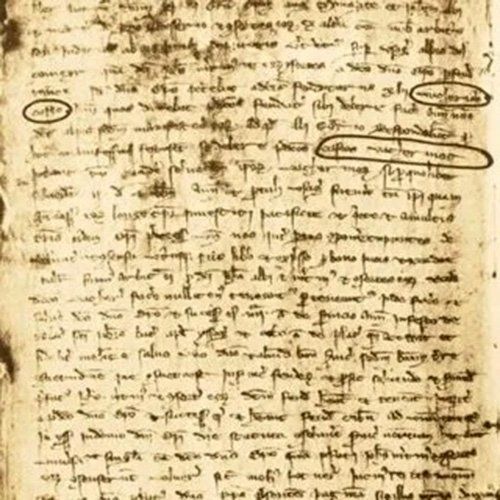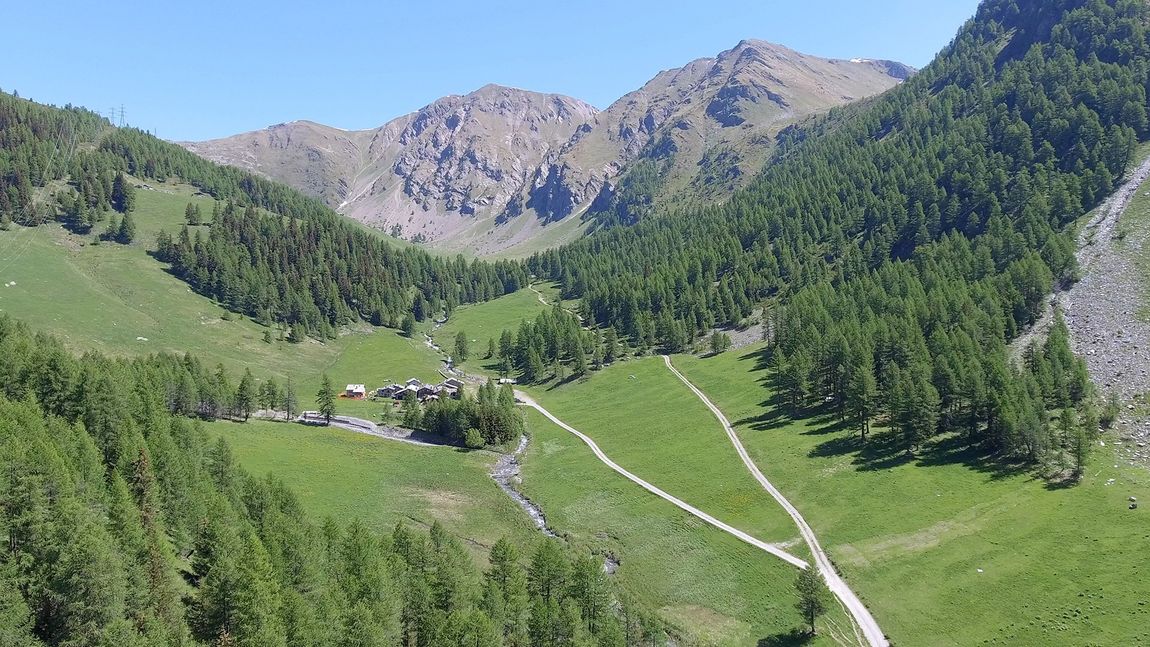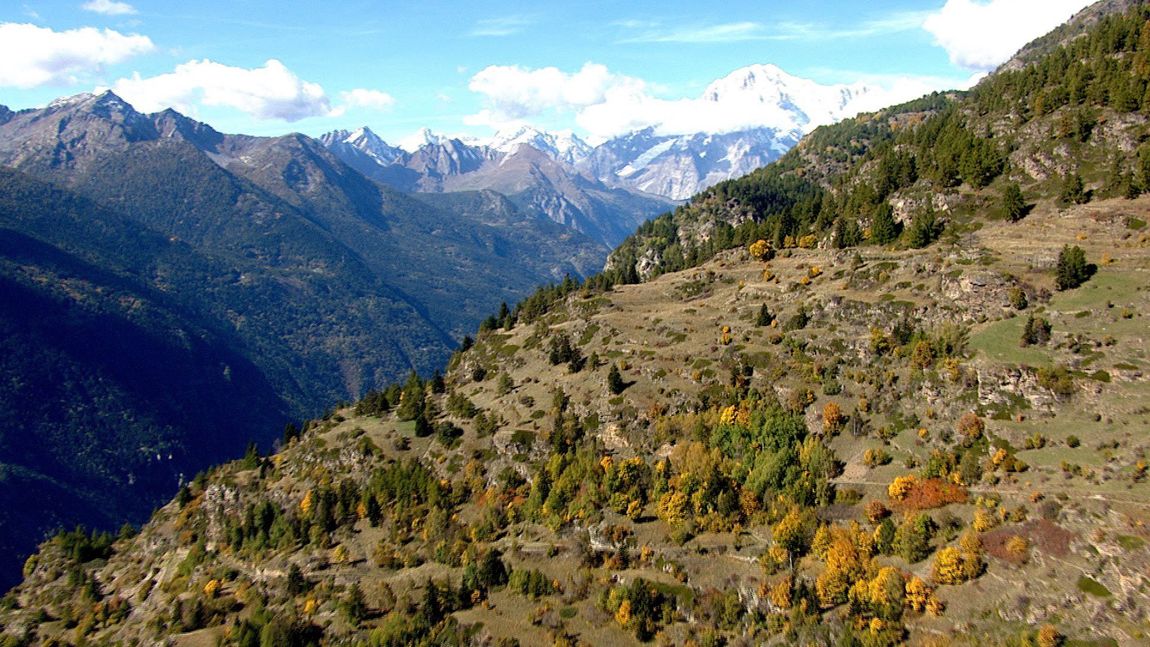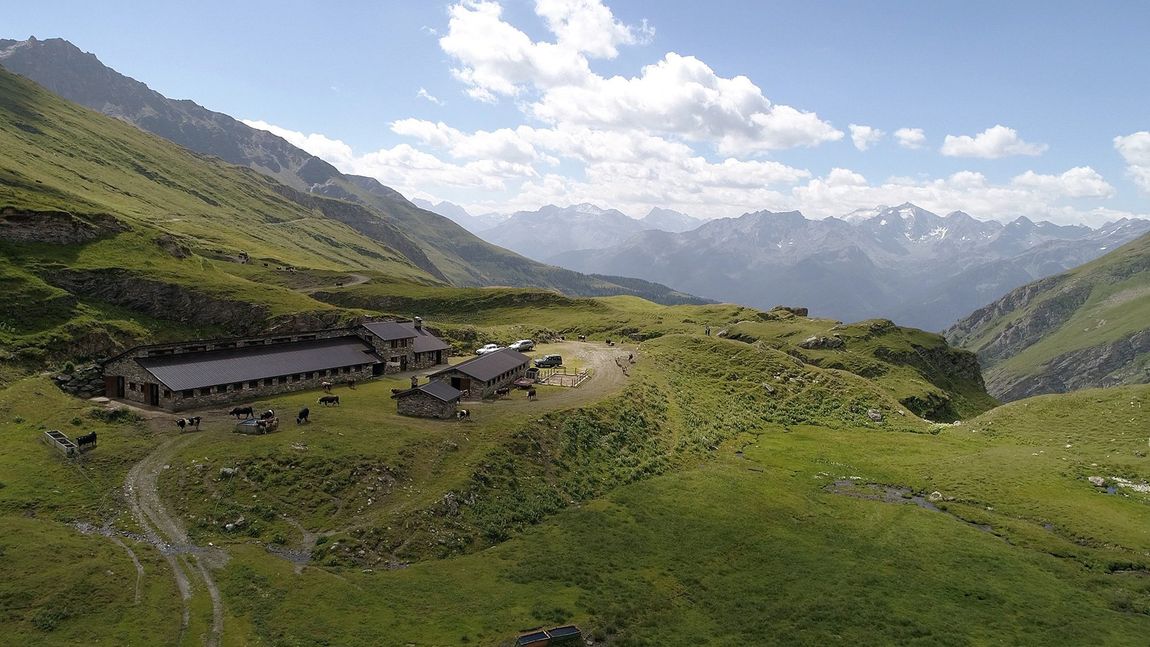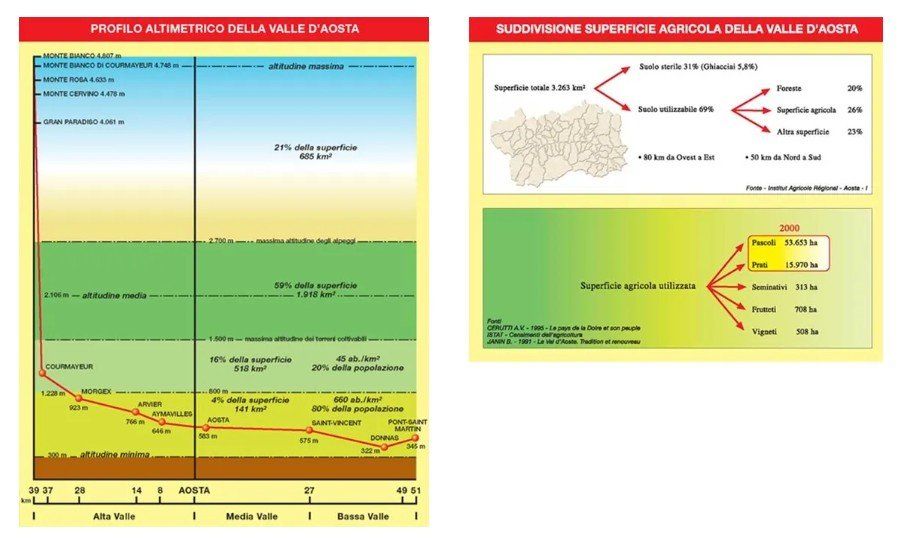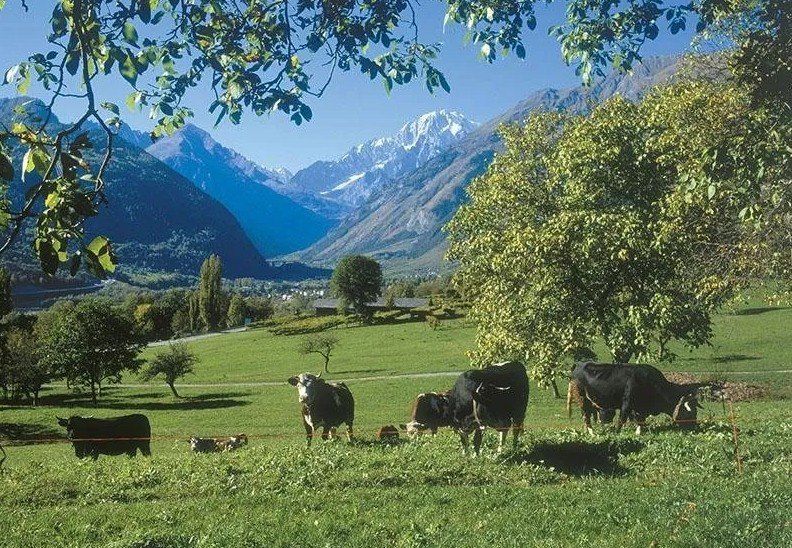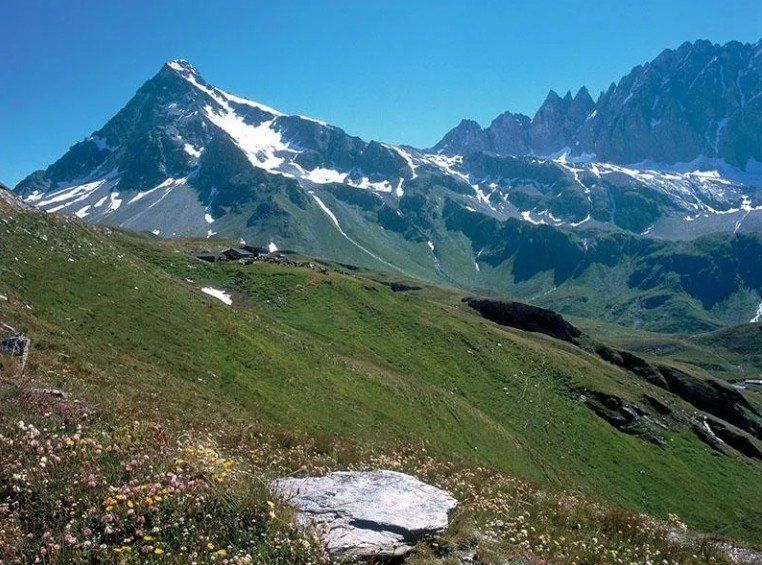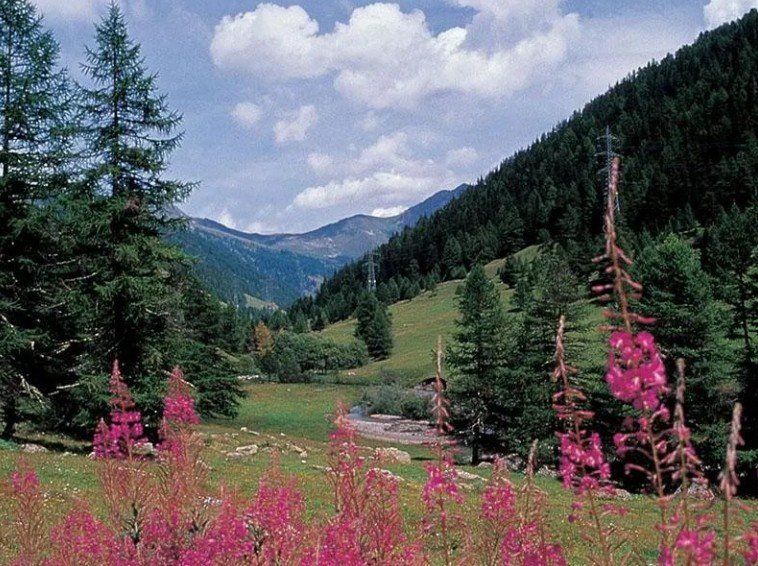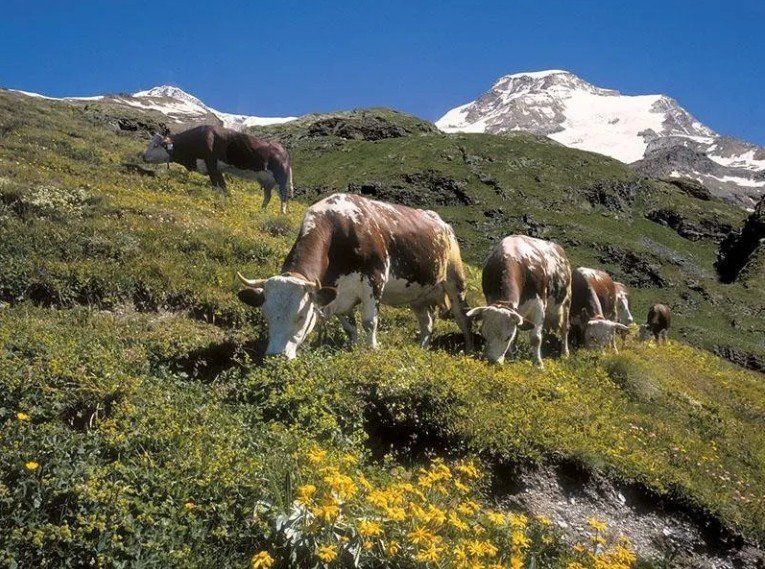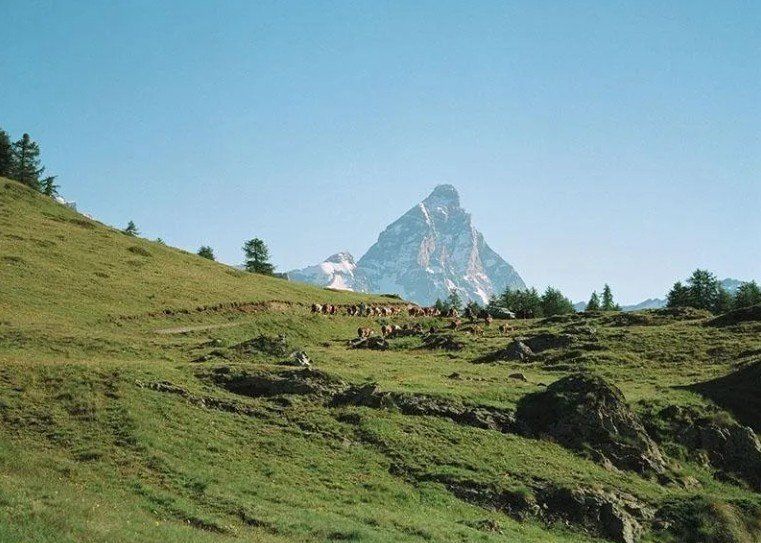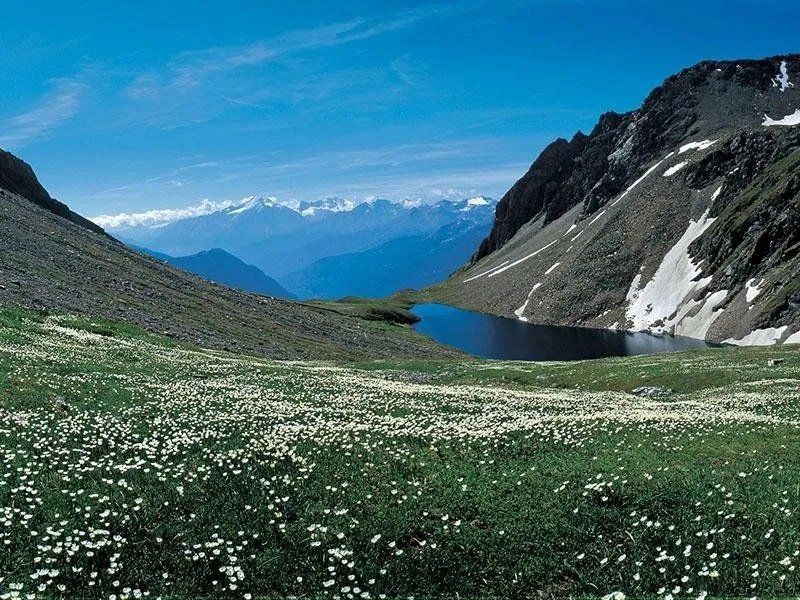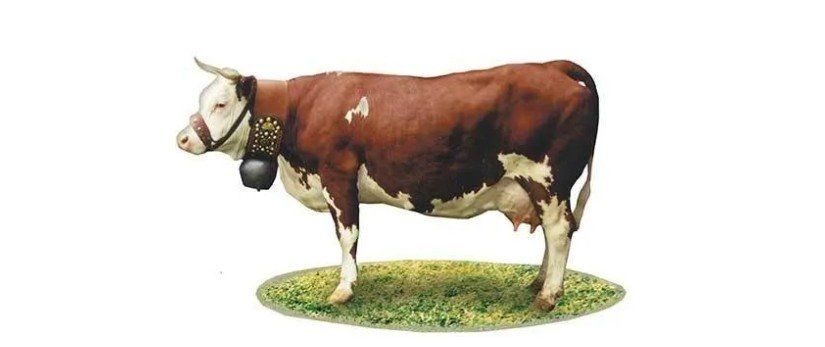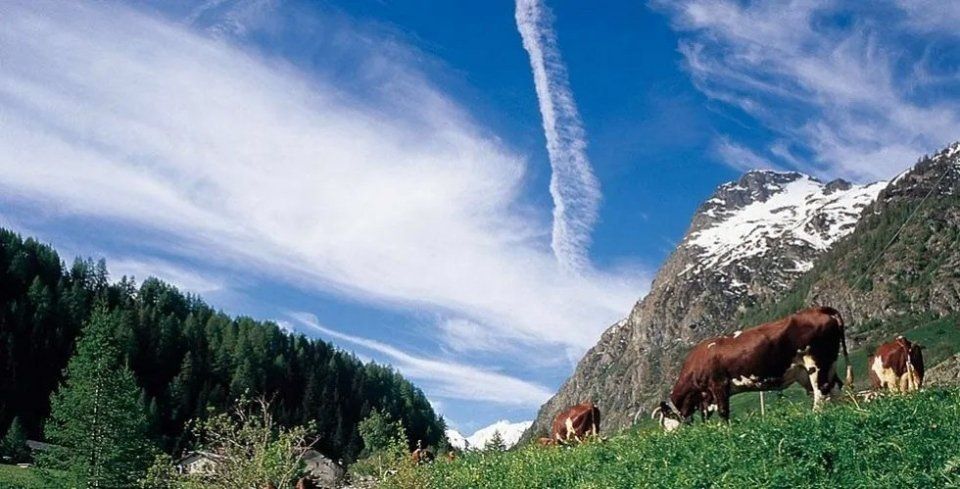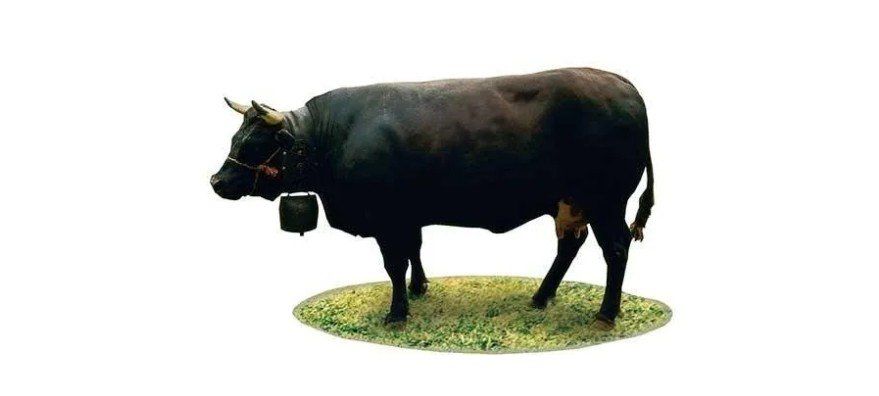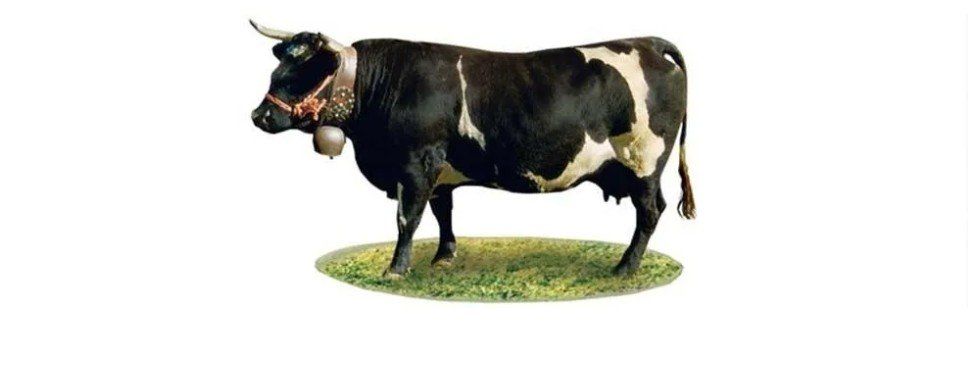fontina d.o.p.
Fontina D.O.P. stands out from other mountain cheeses for its soft and elastic texture, with few holes. It has an oily and compact rind. It has a dark, intense smell. It has a flattened cylindrical shape with a flat surface and concave sides, weighing an average of 8-9 kg.
It has a high energy value, ensuring a good supply of mineral salts, vitamins A and B and lactic bacteria. It is a rather complete and digestible food. Its flavour makes it the ideal ingredient or side for many recipes, letting the imagination do the rest for new culinary creations.
How Fontina D.O.P. was born
The oldest graphic representation of the Fontina D.O.P. dates back to the end of the 15th century, found in a fresco painting in the castle of Issogne, a feudal residence in the lower Aosta Valley. There is a workshop in the painting with a stack of Fontina cheese that looks the same as the Fontina we produce today.
In the photo: Issogne Castle. Fresco from 1480 BC. representing a shop of food products. On the right, some cheese shaped almost identically to the current Fontina shapes.
its HIstory
The term "fontina" appears for the first time in a document dating 1270, written in Latin, to name a specific region. The name was subsequently used since 1700 to refer to the cheese in manuscripts, texts, public deeds and inventories. Some believe it could derive from the Fontin mountain pasture or from the village of Fontinaz or from an old family name. From that moment, however, it enters the current language to indicate this well-known cheese.
* for further information you can consult the first six chapters of the book. You will be able to find it online on our website.
In the photo: replica taken from the document from 1270, in which Vacherino cheese is mentioned for the first time. In the same tome, the patronym and the toponym of Fontines (Peronimus de Fontines and the meadows or the Fontines locality).
THE ENVIRONMENT
GEOGRAPHY, OROGRAPHY, CLIMATE AND AGRONOMIC ASPECTS
The Aosta Valley is located in the heart of the Alps. The climate is continental, and the scarcity of rainfall favours the rapid increase in temperatures in the summer; there is a wide temperature amplitude over the year.
In an orographically complex region, however, there is not only one type of climate. There are different microclimates, depending on the altitude and location in the valley. The outer massifs are made of crystalline rocks mainly. Metamorphic rocks such as calcareous and green rocks also abound. About one-third of the total area is covered by perennial meadows and mountain pastures, reaching up to 3000 metres of altitude.
THE PEZZATA ROSSA VALDOSTANA BREED
The Valdostana Pezzata Rossa, similar to other red-spotted cattle breeds that populate the base of the Mont Blanc massif, most likely derives from the spotted cattle from Northern Europe, introduced by the Burgundians towards the end of the 5th century.
THE PEZZATA NERA-CASTANA VALDOSTAN BREED
The Valdostana Pezzata Nera, the Chestnut and their Swiss relatives, the Hérens breed, represent the local bovine group that originally populated the Alps. It is a common belief that they derived from the Bos Brachyceros species.
The brachycephalic breeds (i.e. species with a broad skull) are known for their lively and authoritarian character. They are a symbol of rusticity and the rural landscape of the area. The Black Valdaostan Piebald and the Chestnut breed, although different in the colour of the coat, are part of the same group.





